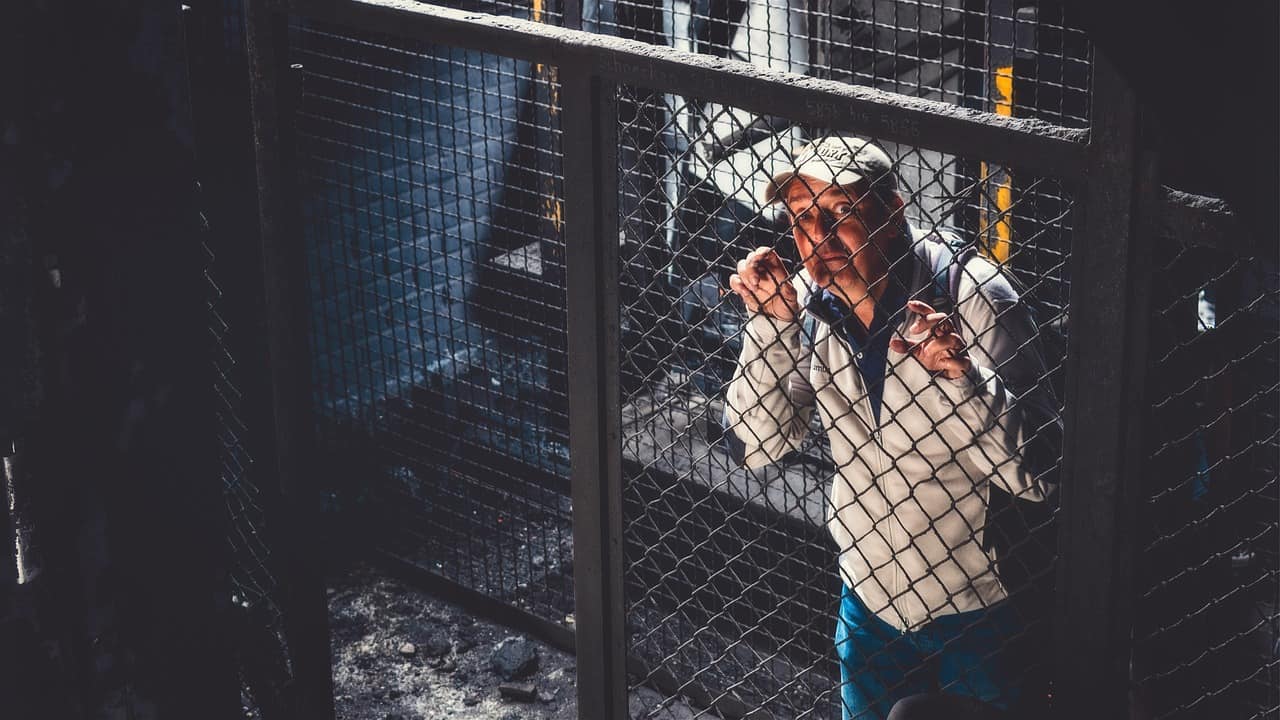Introduction to Jerome Combs Detention Center
Step inside the steel bars and concrete walls of Jerome Combs Detention Center, which holds stories untold and lives in transition. In this blog post, we embark on a journey to explore the realities of incarceration within its confines. Brace yourself for an eye-opening glimpse into the daily life of inmates, the challenges they face, and the impact it has on their mental well-being.
But before we delve deeper into these aspects, let’s take a moment to understand the history and purpose behind incarceration. Join us as we unravel the layers surrounding this controversial topic, shedding light on its necessity and potential for reform.
So grab your metaphorical visitor’s badge as we enter Jerome Combs Detention Center. For many, this establishment remains shrouded in mystery but is essential to understanding our society’s approach to justice.
History and Purpose of Incarceration
The history of incarceration can be traced back to ancient civilizations, where punishment for crimes often involved physical harm or death. However, as societies evolved, so did their approach to dealing with offenders. Imprisonment as a form of punishment emerged during the 17th century in Europe.
Incarceration was initially intended to serve two primary purposes: retribution and deterrence. It was believed that by isolating individuals who had committed crimes from society, justice would be served, and others would be discouraged from engaging in criminal behavior. Over time, however, the purpose of incarceration has expanded to include rehabilitation and societal protection.
While some argue that the primary goal should still be punishment and deterrence, there is an increasing recognition that addressing underlying issues such as addiction or mental health problems can help reduce recidivism rates. This shift towards rehabilitation aims to equip inmates with the necessary skills and support systems for successful reintegration into society upon release.
It is essential to understand that the purpose of incarceration varies depending on jurisdiction and specific policies in place. Countries have different approaches regarding sentencing lengths, prison conditions, and prioritization of rehabilitation programs versus punitive measures.
As we continue exploring the realities of incarceration at Jerome Combs Detention Center, understanding its historical context helps shed light on why certain practices exist today.
Daily Life in the Detention Center
Inside Jerome Combs Detention Center, life takes on a different rhythm for inmates. Each day is structured and regulated, designed to maintain order and security within the facility. The routine begins with an early wake-up call, as inmates are roused to start the day.
Once awake, inmates follow a strict schedule that includes meals, recreation time, educational programs, and work assignments. They are expected to adhere to rules and regulations at all times, with any violations resulting in disciplinary measures.
The living conditions inside the detention center vary depending on factors such as custody level and behavior. Inmates typically reside in small cells or dormitory-style housing units. Privacy is limited as they share common spaces like dining halls and recreation areas.
Despite this controlled environment, detainees have opportunities for interaction and socialization during designated recreational periods or group activities such as counseling sessions or vocational training programs.
Access to healthcare services is provided within the facility; however, it may be limited compared to what one would find outside prison walls. Mental health care is also available but can face challenges due to overcrowding and resource constraints.
Life behind bars can be monotonous, with little freedom or autonomy over daily routines. Inmates often experience feelings of isolation from loved ones who may live too far away or struggle financially.
Challenges Faced by Inmates
Inside the walls of Jerome Combs Detention Center, inmates face a multitude of challenges that can make their time behind bars incredibly difficult. One major hurdle is the loss of freedom and autonomy that comes with incarceration. Locked in small cells for hours, inmates have limited control over their daily lives.
Another challenge is the need for more privacy. Others constantly surround inmates, whether it’s during meals, recreation time, or even when using the bathroom facilities. This constant exposure to others can be overwhelming and lead to feelings of vulnerability and anxiety.
Maintaining relationships with loved ones outside the facility can also be incredibly challenging. Limited visitation hours and strict communication regulations make it difficult for inmates to stay connected with family and friends. This isolation from support systems can contribute to feelings of loneliness and despair.
Furthermore, access to necessities such as healthcare and hygiene products may not always be readily available or affordable for inmates. This lack of adequate care can exacerbate existing physical or mental health conditions.
Moreover, navigating the complex dynamics within prison culture presents its own set of challenges. Inmates must navigate power struggles and potential violence and adhere to unwritten rules to survive day-to-day life inside the detention center.
These challenges faced by inmates highlight some systemic issues within our criminal justice system that need addressing. While incarceration serves as a form of punishment for crimes committed, it is essential that we also recognize the importance of rehabilitation programs in helping individuals reintegrate into society upon release from jail or prison.
Impact on Mental Health
The Jerome Combs Detention Center is more than just a place where individuals are confined. It is a microcosm of the more extensive prison system, with its challenges and consequences for those within its walls. One significant aspect that cannot be ignored is the impact it has on mental health.
For many inmates, incarceration can exacerbate existing mental health issues or even create new ones. The isolation, lack of privacy, and constant surveillance can affect one’s emotional well-being. Feelings of loneliness, anxiety, and depression become all too common in this environment.
Furthermore, access to proper mental healthcare within correctional facilities is often limited or inadequate. Long waiting lists for therapy or medication can leave inmates feeling neglected, and without the support they desperately need. This neglect not only perpetuates their suffering but also hampers any chance at rehabilitation.
Additionally, the culture within detention centers can contribute to further deterioration of mental health. Violence, gang activity, and power struggles among inmates create an atmosphere filled with fear and stress. These toxic dynamics only serve to deepen psychological distress.
It is crucial to acknowledge the long-lasting effects that incarceration has on an individual’s mental well-being. By recognizing these challenges and implementing effective strategies for addressing them – such as increased access to quality mental healthcare services – we can mitigate some of the harm inside our correctional facilities.
Let us strive towards creating environments that promote healing rather than compounding trauma – environments where inmates are given opportunities for growth and rehabilitation instead of being left trapped in a cycle of despair.
Rehabilitation Programs Offered
At the Jerome Combs Detention Center, there is a strong emphasis on providing inmates with resources and opportunities for rehabilitation. The goal is to help individuals address the root causes of their criminal behavior and equip them with skills to reintegrate into society upon release.
One of the critical programs offered is substance abuse counseling and treatment. Many inmates struggle with addiction issues, which often contribute to their involvement in criminal activities. Through individual therapy sessions, group support meetings, and educational workshops, inmates receive comprehensive support in overcoming their substance abuse problems.
Another critical aspect of rehabilitation at this facility is vocational training. Inmates can access vocational programs that teach valuable skills such as carpentry, auto mechanics, culinary arts, and more. These programs provide practical knowledge and instill a sense of purpose and self-worth in the participants.
Educational opportunities are also available within the detention center. Inmates can enroll in GED classes or pursue higher education through distance learning programs. By obtaining an education while incarcerated, individuals increase their chances of finding stable employment post-release.
In addition to these specific programs, mental health services play a vital role in rehabilitation efforts at Jerome Combs Detention Center. Inmates have access to counseling services where they can address underlying psychological issues that may have contributed to their criminal behavior.
By offering a range of rehabilitation programs tailored to meet individual needs, Jerome Combs Detention Center aims to break the cycle of incarceration by addressing both external factors like addiction and internal struggles related to mental health or lack of education or job skills.
Controversies and Criticisms Surrounding the Facility
The Jerome Combs Detention Center has not been immune to criticisms and controversies. One of the main concerns raised by critics is the issue of overcrowding within the facility. With limited space and resources, it can be challenging for inmates to receive adequate care, leading to potential health and safety risks.
Another area of contention revolves around allegations of mistreatment or abuse towards inmates by staff members. These claims highlight a need for increased accountability and proper training for personnel working within the detention center. All individuals in custody must be treated with dignity and respect, regardless of their circumstances.
Additionally, there have been questions about the effectiveness of rehabilitation programs offered at Jerome Combs Detention Center. Some argue that more comprehensive initiatives should be implemented to address underlying issues such as addiction or mental health challenges faced by many inmates.
Critics also point out disparities in sentencing practices, suggesting that certain groups may be disproportionately affected by incarceration rates. This raises concerns about systemic biases within the criminal justice system that must be examined closely.
It is important to note that these controversies do not diminish or invalidate any positive aspects or intentions behind running a detention center like Jerome Combs. However, they remind us that continuous evaluation, transparency, and reform are necessary to address shortcomings within our criminal justice system.
Personal Stories from Former Inmates
The Jerome Combs Detention Center is home to countless individuals who have experienced the harsh realities of incarceration. Each inmate has a unique story, filled with challenges, resilience, and hope for a better future.
One former inmate, John*, shared his journey from despair to redemption. He spoke about the isolation that engulfed him upon entering the facility. Locked in a small cell for hours, he longed for human connection and yearned for freedom.
Another former inmate, Sarah*, recounted her struggle with addiction while behind bars. She described how substance abuse landed her in jail multiple times before she finally sought help within the detention center’s rehabilitation programs. She discovered inner strength and determination through these programs to turn her life around.
For many inmates like John and Sarah, mental health issues are prevalent during their time at Jerome Combs Detention Center. The lack of access to proper healthcare exacerbates their struggles as they battle anxiety and depression while incarcerated.
Despite these challenges, there are success stories too. Mark*, an ex-inmate who spent years at the detention center, found solace in educational programs offered by supportive staff members. Through hard work and dedication, he earned his high school diploma while serving his sentence – an achievement that opened doors to new opportunities upon release.
These personal stories highlight inmates’ difficulties and capacity for growth and transformation if given the right resources and support system. They remind us that compassion and understanding can play a crucial role in helping individuals break free from cycles of incarceration.
Efforts for Prison Reform
Society has become increasingly aware of the need for reform within the prison system, and Jerome Combs Detention Center is no exception. Over the years, various initiatives have been aimed at improving conditions and promoting rehabilitation.
One important aspect of prison reform is addressing overpopulation. Many detention centers, including Jerome Combs, are overcrowded, which can lead to a host of issues, such as increased violence and limited access to resources. To tackle this problem, organizations and activists have been advocating for alternative sentencing options like community service or probation for non-violent offenders.
Another critical area of focus in prison reform is mental health support. Incarceration takes a toll on inmates’ mental well-being, often exacerbating existing conditions or leading to new ones. Efforts have been made to provide better access to counseling services and therapy programs within correctional facilities like Jerome Combs Detention Center.
Additionally, rehabilitation programs play a crucial role in helping inmates reintegrate into society upon release. Vocational training courses that equip individuals with employable skills can make all the difference in breaking the cycle of reoffending. Substance abuse treatment programs are also vital, as substance addiction often contributes to criminal behavior.
Advocates for prison reform argue that punishment alone does not effectively address underlying issues or prevent recidivism. They emphasize the importance of restorative justice practices that encourage accountability while allowing offenders opportunities for personal growth and positive change.
While progress has been made in some areas, much work remains regarding prison reform at Jerome Combs Detention Center and beyond. It requires ongoing commitment from policymakers, communities, and individuals alike to create a system that prioritizes rehabilitation over punishment – one that recognizes every person’s potential for transformation regardless of their past mistakes.
Conclusion: The Need for Understanding and Change
Understanding the realities of incarceration is essential to bring about meaningful change within our criminal justice system. The Jerome Combs Detention Center is a microcosm that sheds light on the more significant issues, highlighting the need for reform and compassion.
One of the key takeaways from exploring life inside this facility is its impact on mental health. Inmates face numerous challenges during their time incarcerated, including isolation, limited access to resources, and a lack of support systems. These factors can have long-lasting effects on an individual’s well-being even after release.
Rehabilitation programs within the detention center are crucial in providing inmates with opportunities for personal growth and development. These programs aim to address underlying issues such as substance abuse or anger management, equipping individuals with skills that can help them reintegrate into society successfully.
Despite these efforts, controversies and criticisms surrounding the facility persist. Overcrowding, understaffing, and allegations of mistreatment raise concerns about humane conditions for those who are incarcerated.
Former inmates’ personal stories offer valuable insights into their experiences while serving at Jerome Combs Detention Center. Their narratives reveal their hardships and desire for change within the system.
Prison reform efforts must focus on creating a more rehabilitative environment rather than solely punitive measures. By prioritizing education, mental health support services, job training programs, and transitional assistance post-release, we can work towards reducing recidivism rates and fostering successful reentry into society.
FAQS
1. What is the Jerome Combs Detention Center?
A: The Jerome Combs Detention Center is a correctional facility in Kankakee, Illinois. It serves as a temporary detention center for individuals awaiting trial or sentencing.
2. What is the history and purpose of incarceration?
A: Incarceration has been used throughout history as a punishment and deterrence for criminal behavior. Its primary purpose is to protect society from dangerous individuals while providing rehabilitation opportunities.
3. What is daily life like in the detention center?
A: Daily life in the detention center can be challenging and monotonous for inmates. They are confined to their cells most of the day, with limited access to recreational activities or social interaction.
4. What challenges do inmates face?
A: Inmates face various challenges during their time in the detention center, including overcrowding, lack of privacy, limited access to healthcare services, and heightened levels of violence.
5. How does incarceration impact mental health?
A: Incarceration can have a significant impact on an individual’s mental health. The isolation, loss of autonomy, and exposure to trauma within the prison environment can exacerbate existing mental health conditions or lead to new ones developing.
6. Are rehabilitation programs offered at Jerome Combs Detention Center?
A: Yes, Jerome Combs Detention Center offers various rehabilitation programs aimed at helping inmates reintegrate into society upon release. These may include educational classes, vocational training opportunities, substance abuse counseling, and anger management programs.
7. What controversies surround Jerome Combs Detention Center?
Controversies surrounding Jerome Combs Detention Center primarily revolve around issues such as inadequate healthcare provision,
overcrowding,
and allegations of mistreatment or abuse towards inmates.
These controversies highlight significant areas that need improvement within our criminal justice system.










